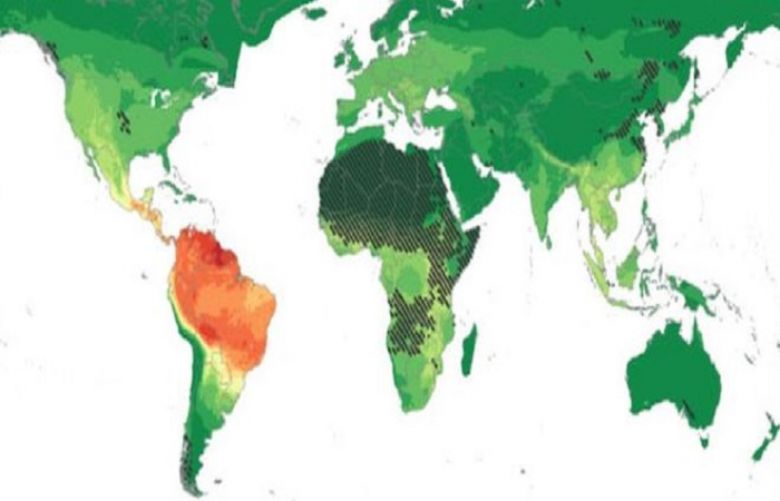South America is a hotbed of potential viruses that could be the next major threat to the world's health, according to "danger maps". The EcoHealth Alliance in New York looked at mammals, the viruses they harbour and how they come into contact with people.
It revealed bats carry more potential threats than other mammals. The researchers hope the knowledge could be used to prevent the next HIV, Ebola or flu.
Some of the most worrying infections have made the jump from animals to people - the world's largest Ebola outbreak seemed to start in bats, while HIV came from chimpanzees.
The researchers' challenge - and it was far from easy - was to predict from where the next could emerge.
They looked at all 586 viruses known to infect 754 species of mammal. This included 188 zoonotic infections - those that have infected both humans and other mammals.
But they also knew some species had been studied in incredible detail while others had been practically ignored.
So the researchers used the information they did know to fill the gaps in their knowledge and estimate which species were harbouring viruses with the potential to infect people.
The study, published in the journal Nature, predicts 17 zoonotic infections in every species of bat and 10 in every species of primate and rodent.
The team then mapped the ranges of species and the infections they carry to work out where the world's danger zones are.
The threat from rodents was again global, but with a concentration in South America.
Dr Kevin Olival, one of the researchers, told the BBC News website: "The missing hotspots are different for different groups of mammals in different parts of the world, but the bat signal overwhelms some of the others.
"But I'm not scared of bats, it's not the bat's fault."
The researchers hope their maps will help the world prepare for the next infection that makes the jump.
Dr Olival added: "Our take-home message is these diseases are emerging because of the human impact on the environment. Our answer is minimise our contact with wildlife, including through hunting and habitat destruction."
James Lloyd-Smith. from the University of California, Los Angeles, said: "Although most pandemics are zoonoses, most zoonoses do not cause pandemics.
"[The] predictions are best used to prioritise research and viral surveillance efforts, not to drive specific policy decisions."
The researchers' next project will look at birds which are another source of zoonotic infections such as avian flu.

